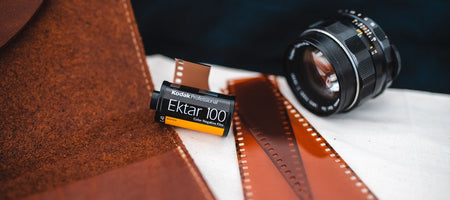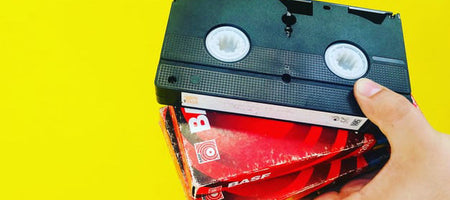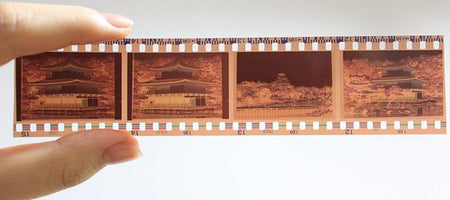Standard 8mm and Super8 film stock and cameras have been the preferred tools of amatuer cineastes and old-school home videographers since their respective debuts in 1932 and 1960. Almost all of the amazing pieces of history, narrative film and documentary you’ll see on this list were done with the much-improved Super8 film stock, since it had smaller perforations which allowed a larger image to be developed and could be recorded in sound, though regular 8mm film had and continues to enjoy a small but devoted following among enthusiasts and collectors.
Super8 movies, like the ones you see here, and the revolutionary handheld cameras that housed them changed the way mass media was recorded and distributed. It made the process democratic. It was now possible for a young filmmaker with nothing but a vision, his parents’ camera and a little bit of pocket money to actually produce a film, no matter how crude (or fantastic) the final result would be. It was now possible for regular citizens to act as on-the-scene journalists in a way traditional news organizations never could. A man standing on the side of the road could suddenly witness something earth-shaking – the assassination of a sitting President in Dallas, Texas, for instance – and have it recorded right then and there and for all time. 8mm and Super8 cameras were the precursors to Youtube, CNN, digital and independent filmmaking, and a whole host of genres and mixed-media experiments in Hollywood and beyond.
The movies discussed here are by no means definitive. There are thousands of brilliant home movies and experiments that never saw the light of day, or that moulder in storage bins and attics as we speak, to make that claim. But these are some of the most genuinely meaningful, powerful, and emblematic examples of the mediums that exist. Let’s get to it!
The Zapruder Film (1963)
Shot by Abraham Zapruder
Okay, we all knew this one was coming. Why not put it right up here in the front and save us all the suspense?
The Zapruder Film, for those who don’t know, is the most famous and certainly the most significant 27 seconds of home video ever shot – the only clear and complete recording of the assassination of John F. Kennedy on November 22nd, 1963. In full color and in real time.
Abraham Zapruder walked to Dealey Plaza that morning eager to try out his new handheld Model 414 PD Bell & Howell Zoomatic Director Series Camera – loaded with 8mm film. He had no idea that the half a minute of footage he shot, the President’s motorcade making the fateful turn onto Elm Street and into the paths of the assassin’s bullet, would be anything more than something amusing to show his family and friends. But in that 27 seconds the country shook, and the film that resulted has been studied endlessly and repeatedly — slowed-down and sped up, freeze-framed and blown up. It entered into the record for the Warren Commission’s report and was quickly enshrined in the Library of Congress as among the most significant images in the history of the United States.
Warning: the footage is very graphic. It shows with great clarity every shot, and most gruesomely, the third and final shot to the head that ended President Kennedy’s life.
It’s hard to overstate the importance of the Zapruder Film, as well as the huge media storm that it created. One story, possibly apocryphal, has it that Dan Rather was instructed (and prepared) to simply steal the film from Zapruder if he refused to give it up. The stills that ran in LIFE Magazine, which was the media outlet that bought the rights for a cool $150,000, were and remain controversial. That kind of violence in the pages of a respected magazine was extremely rare and upsetting to many subscribers. Huge portions of the verifiable forensic evidence in our nation’s greatest whodunit have come directly from this little piece of 8mm film stock; it is the single most important piece of filmic evidence ever recorded.
The Zapruder Film is so famous, in fact, that its aesthetic and content were essential to the creation of large swaths of the next film on our list, one made in Hollywood almost three decades later.
Firelight (1964)
Directed by Steven Spielberg
There’s something strange in the sky — something new and unique. It’s a UFO, and it’s going to change the lives of the people who see it. No, this little movie shot on a Super8mm camera isn’t Close Encounters of the Third Kind, E.T. or War of the Worlds, but it was by the same director, a 17-year-old Steven Spielberg, using his dad’s old home movie camera and a cast of non-professionals from his hometown of Phoenix, Arizona. It was given a one-night only premier and sold 500 tickets at a dollar apiece, generating Spielberg’s first ever profitable movie by earning him a single dollar over his budget.
Spielberg isn’t often lumped in with the young guns of the New Hollywood movement of the 1970s (like Francis Ford Coppola, Bob Rafelson, Hal Ashby, Martin Scorsese) because his work, along with friend George Lucas (Star Wars), is mostly responsible for killing it off by creating a studio hunger for massive blockbusters and huge opening weekends. But he indisputably is one of those guys — one of those young kids who grew up on television and old cinema and was able to start making their own movies using little more than their backyards, their neighborhood friends and whatever money they could get from their parents. Spielberg never went to film school or any kind of college. He just started showing up at the movie lots in Hollywood everyday, doing whatever he could to get noticed and was eventually hired on to do some low-level work in television production. Tiny little homemade productions like Firelight were his film school, and even though the movie is terrible (no teenager ever made a good movie on their first try) you can see the archetypes, storytelling techniques and interest in special effects that would go on to become hallmarks of his hall-of-fame filmmaking career. (Sorry about the subtitles!)
The Punk Rock Movie from England (1978)
Directed by Don Letts
Super8 cameras and inexpensive 8mm film and equipment, as discussed earlier, were all about making filmmaking cheaper and more democratic. Small-bore, easy to operate cameras were a blessing not only to middle class American families but to those oft-ignored but indispensable filmmakers we call documentarians. With cheap cameras that could record sounds and images simultaneously, all of a sudden you didn’t need a budget or a crew to get the shot. You just needed a great subject.
And no subject is a more perfect fit with that anybody-can-do-it idea than punk rock. Made in 1978, as punk was still breaking onto American shores (depending on whose history of punk you’re reading), The Punk Rock Movie From England helped pave the way for bands like the Sex Pistols, The Clash, and Siouxsie and the Banshees to make it big here in the states.
Director Don Letts was a DJ at the now-famed club The Roxy, and for three straight months he was determined to film all of the most exciting punk bands in England, all of which seemed to come streaming through The Roxy in uninterrupted flow. The film became a document not only of some amazing music but also of the audience, the personalities, the attitude, the fashion and the fads that came to define the meaning of the word “punk.” Punk icons like Johnny Rotten, Sid Vicious, Joe Strummer and Johnny Thunders are all present and accounted for, and the film is still a vivid, exciting document of a very specific time and place.
D-Day and World War II Invasion/Liberation Footage (1944)
Shot by Captain John Scillieri
Despite the great strides many filmmakers and film genres were able to make with the aid of light, inexpensive 8mm film and the cameras that used it, the lasting contribution of the format will almost certainly be in the mode of home movies — home movies that reconnect families with their memories in traditional and mundane ways, yes, but also home movies that have become major original-source historical documents as well.
While not as groundbreaking as the Zapruder Film, American GIs in the 1940s were able to provide men and women back home with some of the earliest and most valuable images from World War II. There’s something much more powerful about the silent, first-person camerawork from the real soldiers on the ground than the more artful newsreel photography from the same time period.
This long string of footage was shot by Captain John Scillieri as he arrived in Europe to participate in one of the great days in world history, June 6th, 1944. D-Day. Here we see the men, the ocean, the beach, the liberated cities and towns, and we see it all from the eyes of a man who was really there, seeing it with the same fresh perspective that we were and doing nothing more than trying to create a lasting imprint of his experiences for himself and his progeny.
That’s the true lasting power of 8mm film.













